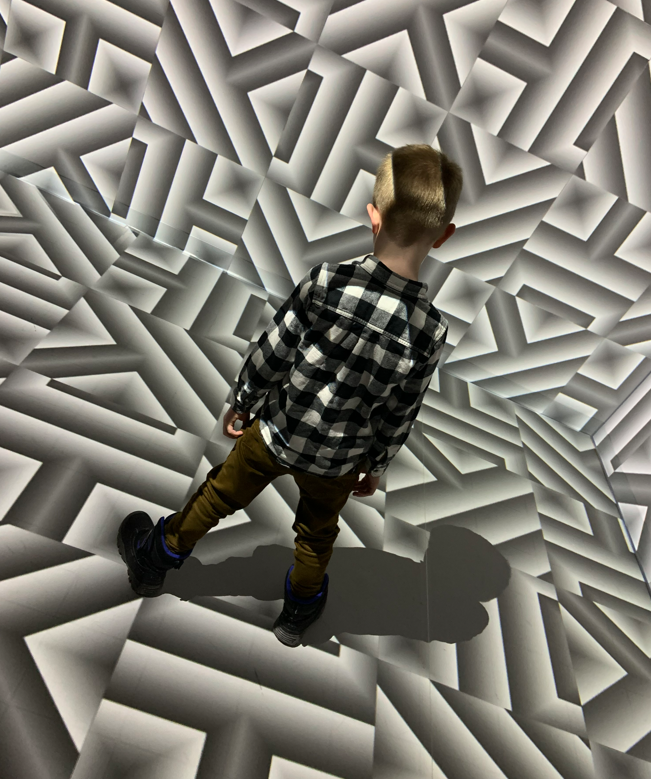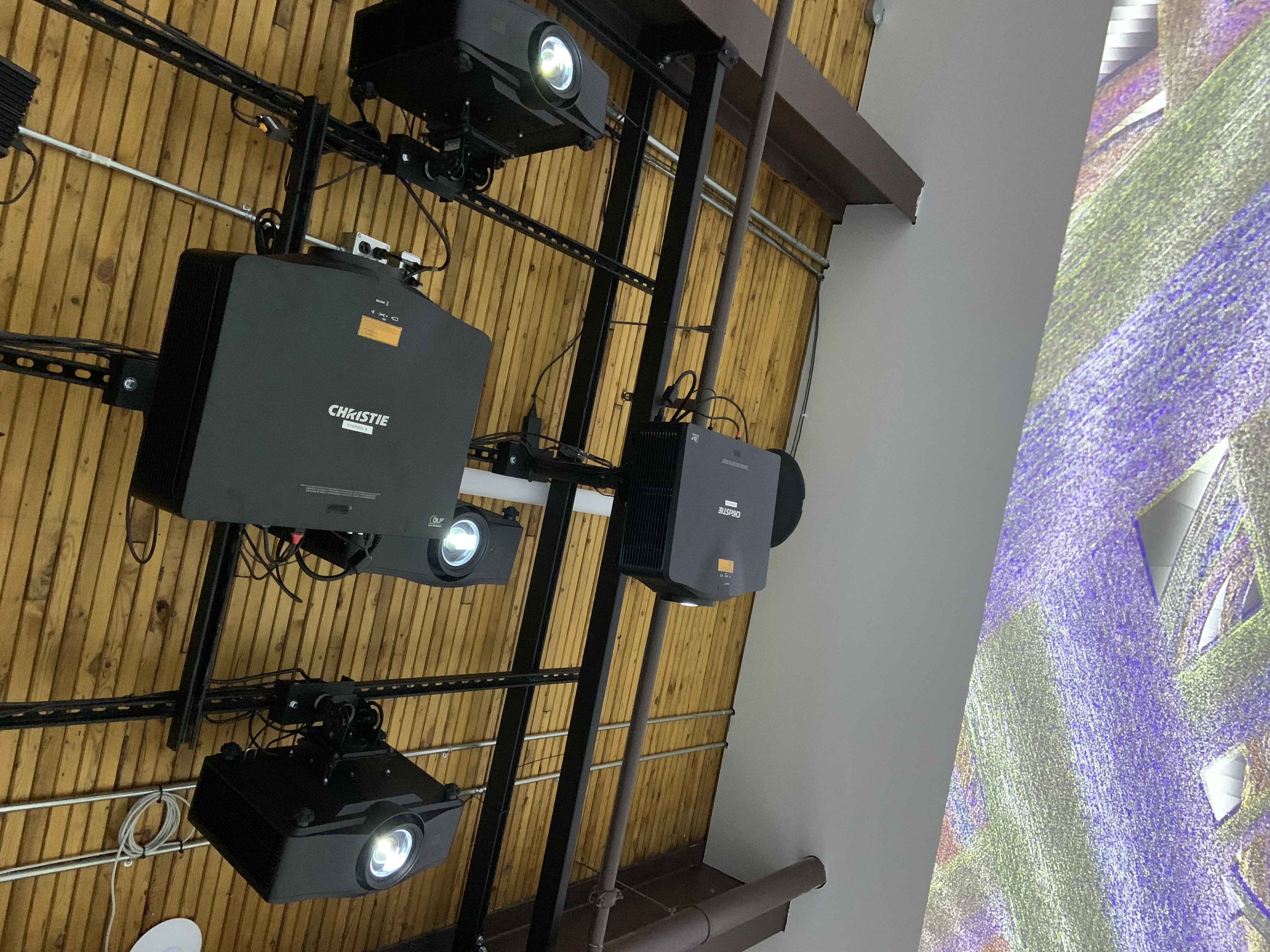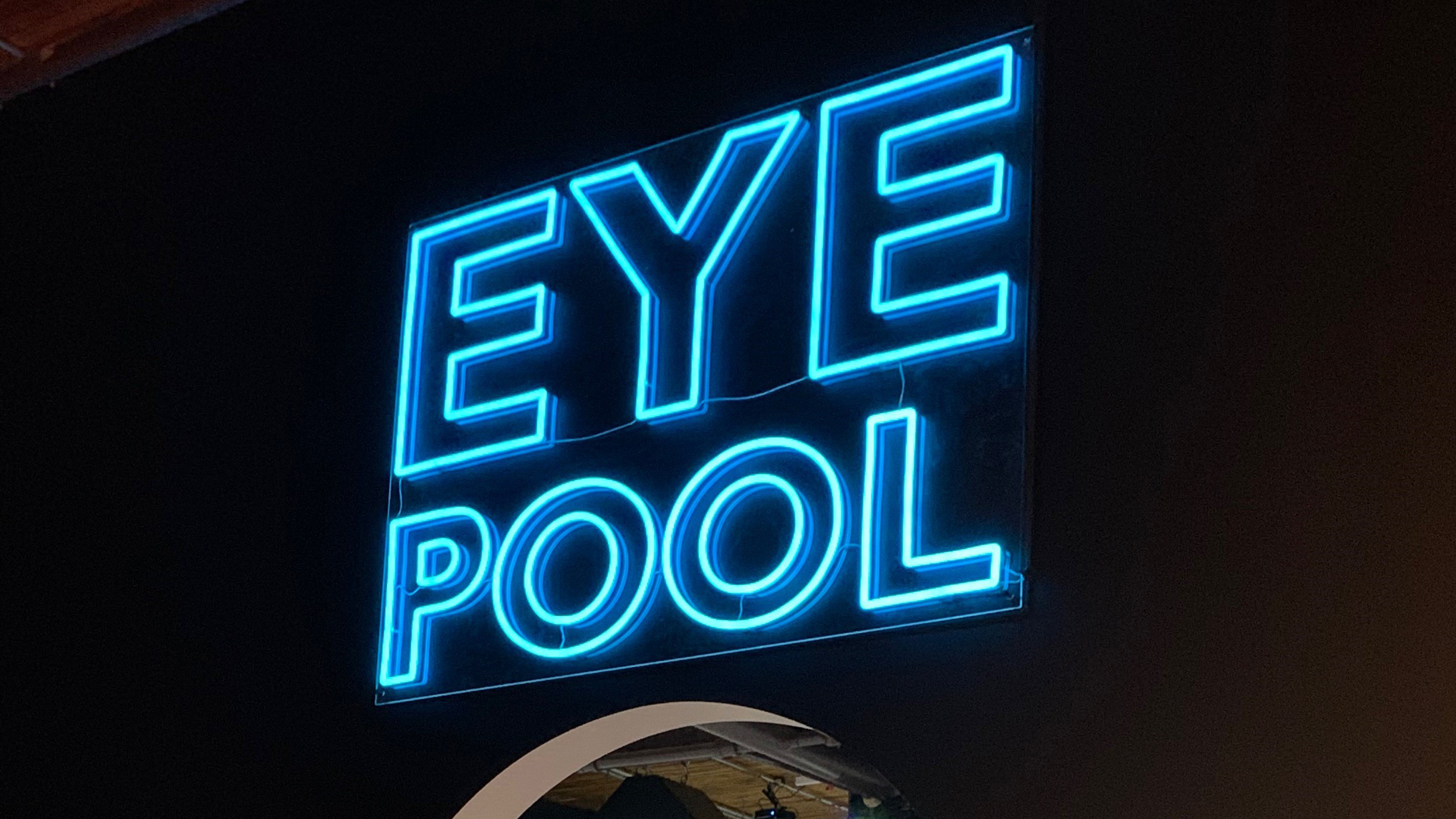THEMUSEUM in Kitchener, Ontario has joined with Christie for projectors and sponsorship for content for its new permanent digital immersive gallery, EYEPOOL. EYEPOOL uses 14 Christie Inspire Series laser projectors to create an immersive experience that is a first of its kind in Southwestern Ontario.
The new immersive gallery experience was inspired by the museum’s mission to advance the arts and culture landscape in the Waterloo Region and prioritize innovation. “We wanted to create something permanent that also has the ability to change, allowing us to showcase different content or software,” said David Marskell, CEO, THEMUSEUM. “We want visitors to come and interact with the technology.”

[9 Large-Venue Projectors and Key Features Experts Recommend as Live Events Return]
Like its name, EYEPOOL is designed to submerge visitors into a digital experience with plans to update content regularly. “With the generosity of Christie, we’ve been able to work with post-secondary institutions, including Conestoga College and University of Waterloo,” added Marskell. Students will be engaged to create content for EYEPOOL, beginning with Conestoga College in the fall of 2023.
To fully immerse visitors in the gallery experience, Christie partner Sherwood Systems installed 14 Christie DWU960ST-iS Inspire Series laser projectors throughout the 1000-square-foot space.
“The Inspire Series projectors deliver the image size, brightness and quality that THEMUSEUM required for EYEPOOL, and the fixed short throw lenses enable projection on the floor given the ceiling height in their space,” said Joe Mercier, senior sales manager, Central Canada, Christie. “The DWU960ST-iS includes built-in Christie Twist™ for warping and blending, ensuring a seamless canvas for content throughout the gallery.”
[Ready Player One: 9 Media Players for Your Next Digital Signage Experience]

THEMUSEUM is launching EYEPOOL with an exhibit titled “IMPOSSIBLE GEOMETRIES: an AZMA work by Laura Anzola, Matthew Waddell, and Darren Young,” with projection on the floor and walls of the gallery, with content that follows visitors as they move throughout the space.
“Some people would suggest we’re really taking a risk, and we’ve been known as outliers; however, this is the right thing for us to do. This will allow us to grow our audience and prompts a much larger conversation, in my mind, of when do museums and attractions start to come together and how do they [museums] stay relevant?” said Marskell.
“I think this is just scratching the surface of where museums will be five, 10, and 20 years from now. They have to move into the future, and with this type of activity.”
